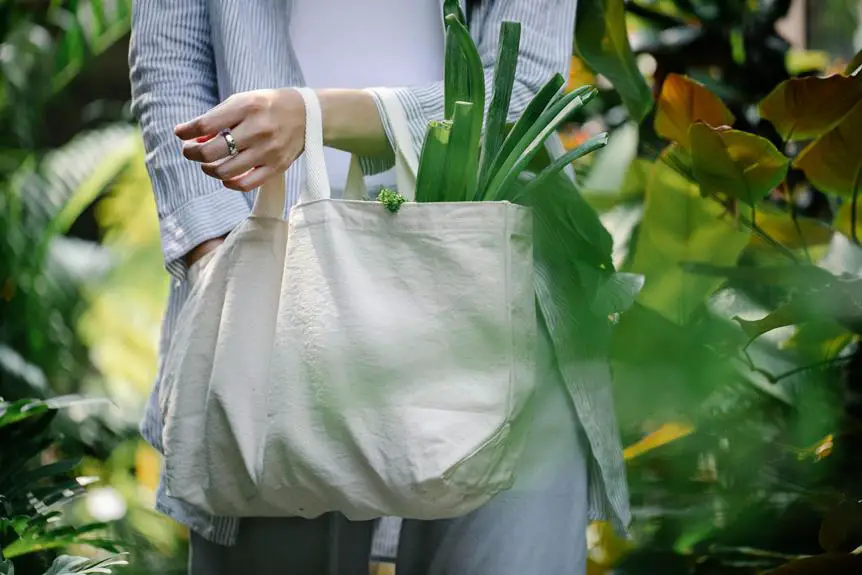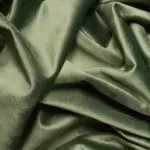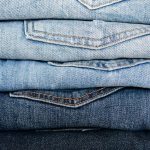When you think about seersucker fabric, you might picture its classic, puckered texture and summer style. But have you considered the eco-friendly options now available? With sustainability becoming a priority in fashion, many brands are using materials like organic cotton and recycled polyester to create seersucker that's not just stylish but also environmentally responsible. What's more, these alternatives often come with certifications that validate their sustainable practices. The question remains: how do these choices impact your wardrobe and the planet?
Table of Contents
Overview of Seersucker Fabric
Seersucker fabric, known for its distinctive puckered texture, offers a lightweight and breathable option that's perfect for warm weather wear. This fabric is typically made from cotton, featuring alternating stripes of flat and crinkled material. The unique texture not only adds visual interest but also allows for better air circulation, making it a favorite for summer clothing.
You'll find seersucker in various patterns and colors, from classic blue and white stripes to vibrant, bold designs. It's versatile enough for casual and formal occasions, whether you're dressing up for a wedding or keeping it relaxed at a picnic. The fabric's structure helps it resist wrinkles, so you can look polished even on the hottest days.
Seersucker's history dates back to the 19th century, originally used in menswear, but it's now embraced by both men and women. When you choose seersucker, you're not just opting for style; you're also selecting a fabric that's practical and functional.
With its blend of comfort and charm, seersucker remains a timeless choice for anyone looking to elevate their summer wardrobe.
Benefits of Eco-Friendly Seersucker
Opting for eco-friendly seersucker not only enhances your wardrobe but also supports sustainable fashion practices that benefit the planet. By choosing this type of fabric, you're making a conscious decision to reduce your environmental impact.
Eco-friendly seersucker is typically made from organic or recycled materials, which means it uses fewer resources and generates less waste compared to conventional fabrics. You'll notice that eco-friendly seersucker is often more breathable and comfortable, making it perfect for warm weather. The unique texture allows air to circulate, keeping you cool while looking stylish.
Plus, many brands that produce eco-friendly seersucker prioritize ethical manufacturing processes, ensuring fair labor practices. When you wear eco-friendly seersucker, you're also joining a community of environmentally conscious consumers. You're signaling to brands that sustainability matters, encouraging them to adopt greener practices.
This choice not only reflects your personal style but also aligns with a larger movement toward responsible consumption. Ultimately, choosing eco-friendly seersucker is a win-win. You get to enjoy fashionable, comfortable clothing while actively participating in the effort to protect our environment.
Your decision can inspire others to make similar choices, creating a ripple effect in sustainable fashion.
Sustainable Materials for Seersucker
Sustainable materials like organic cotton, linen, and recycled polyester are excellent choices for crafting seersucker fabric. By opting for these materials, you're not just making a fashion statement—you're also supporting eco-friendly practices that benefit the planet.
Here are four sustainable materials you should consider:
- Organic Cotton: Grown without harmful pesticides or synthetic fertilizers, organic cotton is soft, durable, and better for the environment.
- Linen: Made from the flax plant, linen requires less water and fewer chemicals compared to conventional fabrics. It's naturally biodegradable and offers a unique texture.
- Recycled Polyester: This material is created from recycled plastic bottles, reducing waste and conserving resources. It retains the lightweight and breathable qualities of traditional polyester.
- Hemp: Known for its strength and durability, hemp grows quickly with minimal water and no pesticides. It also enriches the soil, making it a great choice for sustainable fashion.
Production Methods and Certifications
When choosing seersucker fabric, it's crucial to consider how it's produced.
You'll want to look for sustainable sourcing practices and eco-certification standards that ensure a lower environmental impact.
This not only benefits the planet but also gives you peace of mind about your fabric choices.
Sustainable Sourcing Practices
Seersucker fabric can be sourced through eco-friendly production methods that prioritize both environmental health and social responsibility. When you choose sustainable sourcing practices, you're not just investing in a fabric; you're supporting a movement towards more responsible manufacturing.
Here are four key aspects to consider:
- Water Management: Look for suppliers that implement efficient water use systems to minimize waste and pollution in the dyeing and finishing processes.
- Organic Materials: Opt for seersucker made from organic cotton or other natural fibers that avoid harmful pesticides and synthetic fertilizers.
- Ethical Labor Practices: Ensure that the manufacturers follow fair labor standards, providing safe working conditions and fair wages for their employees.
- Local Sourcing: Choose brands that source their materials locally to reduce transportation emissions and support local economies.
Eco-Certification Standards
Understanding eco-certification standards is vital for ensuring that your seersucker fabric meets high environmental and ethical production criteria. These standards help you identify materials that are produced with care for the planet and its people.
Look for certifications like GOTS (Global Organic Textile Standard), which guarantees organic fibers and environmentally responsible manufacturing.
Another important certification is OEKO-TEX, which ensures that textiles are free from harmful substances, promoting safety for both consumers and the environment. When you choose fabric with such certifications, you're making a statement about your commitment to sustainability.
You should also consider the production methods used. Fabrics crafted using low-impact dyes and sustainable processes, like water-efficient weaving or solar energy, often come with eco-certifications. This not only reduces the environmental footprint but also supports ethical labor practices.
Styling Eco-Friendly Seersucker
Eco-friendly seersucker offers a stylish and sustainable choice for your warm-weather wardrobe. It combines comfort and breathability with a chic appearance, making it perfect for various occasions.
To help you style your eco-friendly seersucker pieces, consider these four tips:
- Pair with Natural Fabrics: Combine seersucker with other eco-friendly materials like organic cotton or linen to maintain a cohesive, sustainable look.
- Accessorize Smartly: Use accessories made from recycled materials or natural fibers. A simple straw hat or biodegradable tote can elevate your outfit while staying eco-conscious.
- Choose Vibrant Colors: Embrace the playful patterns and colors of seersucker. Bright hues can make your outfit pop, so don't be afraid to experiment and express your personality.
- Layer Wisely: In cooler weather, layer your seersucker pieces with lightweight cardigans or jackets made of sustainable materials. This not only keeps you comfortable but also adds depth to your outfit.
Brands Leading the Way
As consumers increasingly prioritize sustainability, several brands are stepping up to offer stylish seersucker options that align with eco-conscious values.
One standout is Patagonia, known for its commitment to environmental responsibility. Their seersucker pieces are crafted from recycled materials, making them a great choice for the eco-conscious shopper.
Another brand to consider is Eileen Fisher, which focuses on sustainable practices throughout its supply chain. Their seersucker garments aren't only chic but also made from organic cotton, ensuring a minimal ecological footprint.
You might also want to check out Outerknown, founded by surfer Kelly Slater. This brand emphasizes transparency and sustainability, offering seersucker styles that utilize organic fabrics and fair labor practices.
Lastly, Amour Vert is making waves with its commitment to producing fashionable, eco-friendly clothing. Their seersucker collection incorporates sustainable materials and promotes a zero-waste philosophy.
Frequently Asked Questions
How Does Seersucker Fabric Impact the Environment Compared to Other Fabrics?
When you compare seersucker fabric to others, you'll find its production often uses less water and energy. Its lightweight nature reduces shipping costs, making it a more sustainable choice overall, benefiting the environment significantly.
Can I Find Organic Cotton Seersucker Options Easily?
You can find organic cotton seersucker options fairly easily. Many retailers offer sustainable fabrics, so check online stores or local shops. Always look for certifications to ensure you're getting truly organic materials that match your needs.
Is Seersucker Fabric Durable for Everyday Wear?
Yes, seersucker fabric is durable for everyday wear. Its unique texture helps resist wrinkles and maintain shape, making it a great choice for casual outfits. You'll find it comfortable and long-lasting, perfect for warm weather adventures.
What Care Instructions Are Recommended for Eco-Friendly Seersucker?
For eco-friendly seersucker, you should machine wash in cold water with mild detergent. Avoid bleach, and tumble dry on low. Iron on a low setting if needed, but it's best to hang to preserve texture.
Are There Any Allergic Reactions Associated With Seersucker Fabrics?
You might experience allergic reactions to seersucker fabrics if you're sensitive to certain fibers or dyes. It's best to check the material composition and opt for natural options to minimize potential irritants and ensure comfort.
- How Does Ring Spun Cotton Affect Garment Fit and Shape Retention? - August 13, 2024
- What Are the Challenges in Producing Ring Spun Cotton? - August 13, 2024
- Is Ring Spun Cotton Suitable for Plus-Size Clothing? - August 13, 2024






